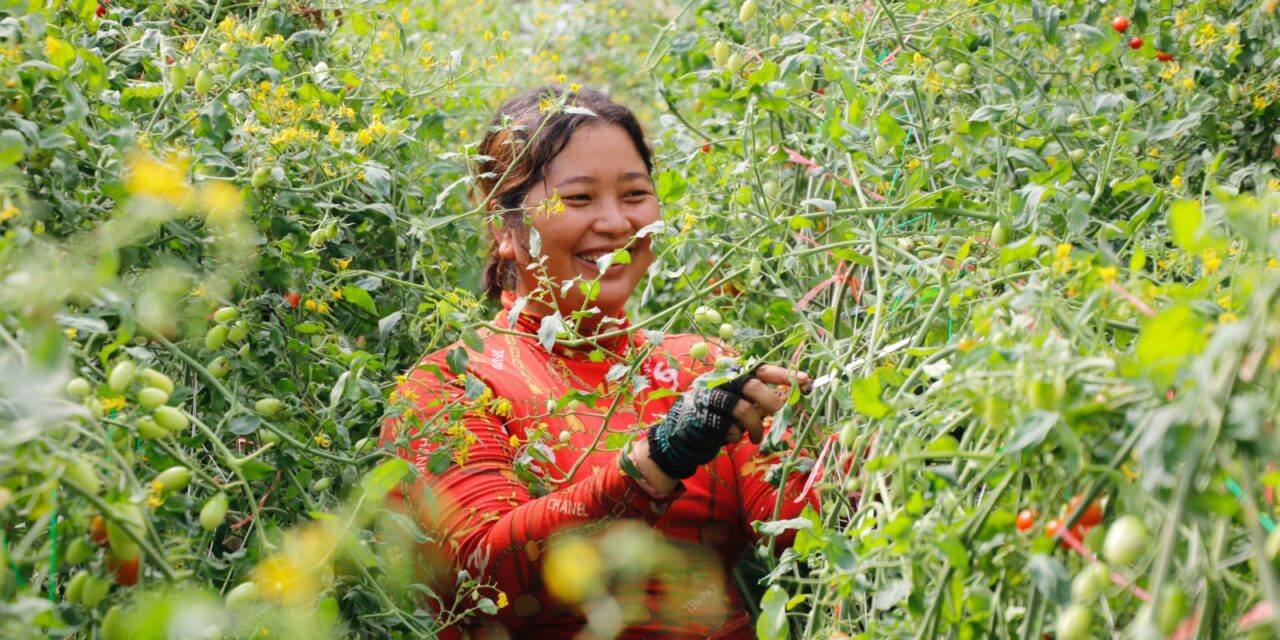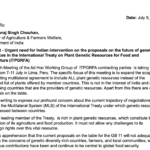Soun Somnang’s journey into agroecology was full of challenges. Unlike conventional farming, which relies heavily on chemical fertilizers and pesticides, agroecology uses natural processes that protect and restore biodiversity. This approach requires farmers to prepare their own natural fertilizers and pest control solutions, which is a time-consuming and labor-intensive process. During our visit, Somnang shared her methods for creating natural fertilizers, demonstrating her commitment to sustainable practices. She uses leftover vegetables, fish waste, and cow dung to produce nutrient-rich fertilizers. These ingredients, readily available from her household, are transformed through composting and fermentation. The result is a series of natural fertilizers that improve soil health and crop quality.
The path to successful agroecology farming is not easy, and Somnang’s journey included financial losses and uncertainty in the initial stages. Unlike the quick fix of chemical fertilizers, natural methods take time to show results. Somnang faced significant obstacles as she worked to build healthy soil and create a balanced ecosystem on her farm. One of the biggest challenges is the time and effort required to produce natural fertilizers. Many farmers are discouraged by this labor-intensive process and opt for the convenience of chemical alternatives. However, Somnang’s perseverance and belief in the long-term benefits of agroecology kept her committed to her vision. Her family, particularly her husband, who understands and supports agroecology, played a crucial role in her ability to persist through difficult times.

Soun Somnang explaining to Focus team her method of making natural fertilizer used in her farm. Photo: Phun Phearun.
Despite the initial struggles, Somnang’s dedication to agroecology has paid off. Over time, her farm has become more stable, and the quality of her produce has improved significantly. Customers now prefer her vegetables for their better taste and longer shelf life, directly linked to the use of natural fertilizers and sustainable farming practices. Agroecology offers numerous benefits beyond just better-tasting produce. By relying on natural inputs and promoting biodiversity, this farming method enhances soil fertility, reduces environmental pollution, and supports ecosystem health. It also makes the farm more resilient against pests and diseases, reducing the need for harmful chemicals.
As a woman in a field traditionally dominated by men, Somnang’s achievements are even more remarkable. Her role as a female farmer and leader in agroecology challenges gender norms and inspires other women to pursue sustainable farming practices. Her success underscores the importance of supporting women in agriculture and recognizing their contributions to sustainable development.
Agroecology is a holistic approach to agriculture that integrates ecological principles into farming systems. It uses natural processes and local knowledge to create sustainable and resilient agricultural practices[i]. Agroecology promotes biodiversity, soil health, and the sustainable use of natural resources, aiming to create farming systems that are environmentally sound, economically viable, and socially just[ii]. Unlike conventional agriculture, which often relies on monocultures and synthetic inputs, agroecology encourages crop diversity and the use of organic inputs[iii]. This approach not only improves the sustainability of farming systems but also contributes to food security and food sovereignty as well as the well-being of farming communities[iv]. Agroecology is fundamentally about creating self-reliance among peasants by delinking them from corporate farm inputs and technologies.
Ta Soun Natural Farm is an example of the potential of agroecology. Soun Somnang’s journey highlights the challenges and rewards of this sustainable farming method. Her success is an example of the power of perseverance, community support, and a deep commitment to ecological principles. As more farmers adopt agroecology, the benefits for our food systems, environment, and communities will continue to grow, paving the way for a more sustainable and resilient future.
—–
[i] Altieri, M. A. (1995). Agroecology: The Science of Sustainable Agriculture. CRC Press; Gliessman, S. R. (2014). Agroecology: The Ecology of Sustainable Food Systems. CRC Press.
[ii] Wezel, A., et al. (2009). Agroecology as a science, a movement, and a practice. Sustainable Agriculture, 27(3), 503-515.
[iii] Rosset, P. M., & Altieri, M. A. (2017). Agroecology: Science and Politics. Fernwood Publishing.
[iv] Francis, C., et al. (2003). Agroecology: The Ecology of Food Systems. Journal of Sustainable Agriculture, 22(3), 99-118; De Schutter, O. (2010). Report submitted by the Special Rapporteur on the right to food. United Nations Human Rights Council.









